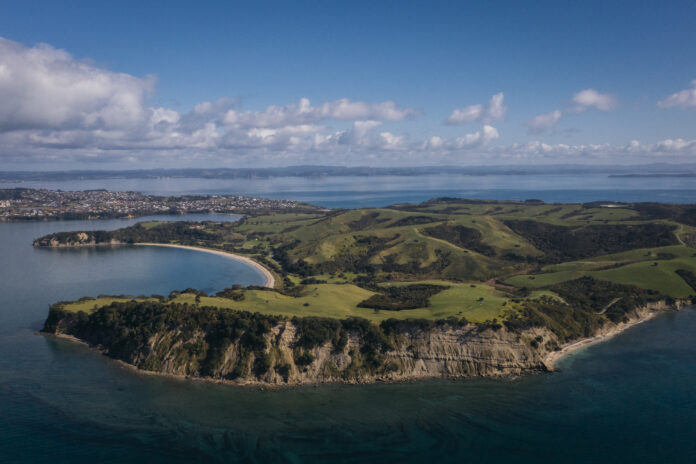Source: Auckland Council
Auckland/Tāmaki Makaurau is blessed with 3,200km of coastline of significant environmental, social, cultural and economic value. Auckland’s diverse coastline is much loved by residents and visitors alike, but it also presents a range of issues and hazards that we need to better understand and plan for. Issues like complex coastal processes and the impacts of coastal hazards, climate change, and ongoing regional growth are some of the challenges Auckland Council wants to discuss further with mana whenua and coastal communities.
To help plan for the future management of our coastline, the council is piloting Auckland’s first of around 15 coastal management plans (CMP), with community presentations in Whangaparāoa starting this month.
Once completed, the CMPs will provide site-specific coastal management strategies that will outline the preferred management response for each site over time. The 15 CMPs will help inform development of a regional coastal asset management plan and regional prioritisation process for funding.
Councillor Richard Hills, chair of the council’s Environment and Climate Change Committee, says CMPs aim to achieve best practice, holistic, operational coastal management. He explains that CMPs seek to develop high-level management approaches for specific sections of coastline.
“What’s great about the CMP approach is that any assessment we make as part of the collaborative CMP planning process will give us a range of future management options for our coastline. We can then make firm decisions, based on the identified options, depending on how the coastline changes over time. The CMP process is designed to be extremely flexible and responsive as changing conditions, like sea level rise for example, become clearer over time,” explains Councillor Hills.
“We can’t just hope for the best and only plan to respond to issues when they happen, we must prepare as best we can in advance. We are going to plan for the future management of our coasts by merging science and technical expertise with direction and input from mana whenua and local community.”
“Our coastal management plans are going to reflect the best scientific evidence available to us at this time and the coastal knowledge and experiences that our communities value the most.”
The council expects CMPs to raise community awareness and understanding of the potential consequences of coastal hazards and climate change. By collaborating with mana whenua and coastal communities to better understand place-based experience and key areas of value and importance, targeted coastline management strategies for sections of Auckland’s coastline can be developed and revised as things change.
The council’s Acting General Manager- Engineering and Technical Services, Paul Klinac, says that one of the things he likes the most about the CMP process is that this type of planning allows for adaptive policies that may change over time.
“Decisions won’t be set in stone,” says Mr Klinac.
“We will be partnering with mana whenua and the community to identify a range of options and outcomes that will be dependent upon how the coast changes over time and how quickly. For example, a local coastal community might identify a much-loved playground in a coastal reserve as something that they really value but agree that the playground should potentially be relocated further back from the shoreline if coastal inundation was causing the playground to flood more than once a year.”
As well as relying on mana whenua and community input, CMPs will use coastal hazard information like coastal erosion and coastal inundation data, flooding and climate change research, and a regional vulnerability assessment that is being developed and that will identify areas of the coast that may be most at risk from future changes. CMPs will enable a better understanding of the potential impacts of coastal hazards and climate change on Auckland’s built environment and coastal communities. They consider at least a 100-year timeframe to ensure sustainable outcomes.
Councillor Hills wants to reassure Aucklanders that CMP planning is not about the council saying ‘right, this is what we are doing, and we are doing it now,’ and stresses it’s about forward planning for an unknown future while knowing that things are going to change.
“We are all facing an uncertain future with climate change, and councils across New Zealand are working hard to understand what that means. No one knows exactly how our coastline will change or precisely when those changes will occur,” says Councillor Hills.
“We need to identify options now to help us best manage our coastline and coastal assets in times to come. When making future decisions about the coastal experiences we value, I want Auckland’s coastal communities to be informed, prepared and resilient. Participating in the development of your local CMP will help achieve this, and I encourage you to get involved.”
Coastal management plans are planned throughout Tāmaki Makaurau with the first CMP starting soon. To participate in development of the Whangaparāoa CMP pilot:
- Come along to public presentations at the Whangaparāoa RSA from 6:30 – 8:30 pm on 18 February,4 March and the 18 March 2021.
- Pop in and have a chat with our experts at a public open day at the Whangaparāoa Library on 27 March between 10 am and 2 pm on 22 May between 10 am and 2 pm.
- Join the conversation on ‘Social Pinpoint’ from 18 February – 30 March 2021. Tell us about your experiences living, working and playing on the Whangaparāoa coast using our interactive engagement tool.
- Join the live stream of our public presentations or watch a recording of the public presentations at a later time.
For more information about the Whangaparāoa trial, email us at coastalmanagementplans@aucklandcouncil.govt.nz
For more information on coastal management plans and to read Auckland’s Coastal Management Framework, check out the council’s website.



